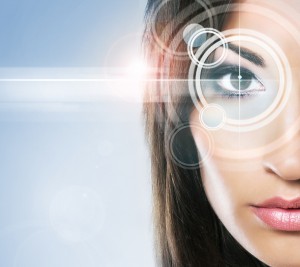Among other patent applications published today by the United States Patent & Trademark Office (USPTO), one attributed to Apple Inc. (NASDAQ:AAPL) describes methods for creating an electronic device capable of analyzing the user’s emotions and modifying its own functions accordingly. The application goes into considerable detail on the specific techniques whereby a silicon and aluminum device can read the subtle shadings of human emotion, but is tantalizingly silent on the specific uses to which this data would be put.
The application, #2014013654, is entitled “Determining Preferential Device Behavior.” The title underlines the fact that the invention is meant to alter the device’s behavior and function depending on the user’s mood. This, of course, begs the question as to how device behavior can or should change when a user is euphoric, tired, energetic, angry, or depressed. Mobile electronic devices are limited in their functions and responses, and it is not clear how, for instance, a telephone call would be handled differently if the iPhone’s owner were happy or infuriated.
 One idea that seems vaguely possible is that emails or SMS messages might be delayed for “review in ten minutes” if the user was in the grip of an exceptionally negative emotion. Such a delay could allow someone in a rage time to “cool off” and think better about sending an insulting message to a boss, colleague, or friend. On the other hand, such a feature might seem intrusive to the user and could potentially increase their fury or depression rather than help circumvent it.
One idea that seems vaguely possible is that emails or SMS messages might be delayed for “review in ten minutes” if the user was in the grip of an exceptionally negative emotion. Such a delay could allow someone in a rage time to “cool off” and think better about sending an insulting message to a boss, colleague, or friend. On the other hand, such a feature might seem intrusive to the user and could potentially increase their fury or depression rather than help circumvent it.
Another possibility is that the mood-sensing software could be somehow related to Apple’s (AAPL) major health project. Apple is hiring health professionals and the iWatch is rumored to be exercise and health related. Perhaps an emotion sensing device could recommend actions such as taking a walk if the user is angry or watching an amusing film if the user is sad. Even playing specific pieces of music could help shift emotions in a positive direction, or keep them postiive once the user is in an upbeat frame of mind.
All of this is essentially groundless speculation, however. What is clear is that Apple Inc. (AAPL) is attempting to patent methods by which a device can measure its user’s emotional state. According to the application, this can be done either visually or audibly. The device can either detect the user’s facial expressions or analyze tone, pitch, intensity, and so forth. Presumably, a device could be set up to use both types of data input to determine mood.
The device would then compare acquired data to a “decision tree” in order to correctly analyze mood. The device would rely both on individual cues learned from observation of the owner and from a generic database of human tones and facial expressions.
The patent application was initially filed on March 1st, 2013, and names Apple Inc. (AAPL) as the assignee. The inventors of record include Lukas M. Marti, Ronald Keryuan Huang, and Shannon M. Ma. Mr. Marti is a Santa Clara inventor with an interest in paragliding and skydiving and a total of 14 patents filed, of which four have been granted. Mr. Huang has been working for Apple since 2007 and has filed 51 patent applications, of which 19 have been granted.



